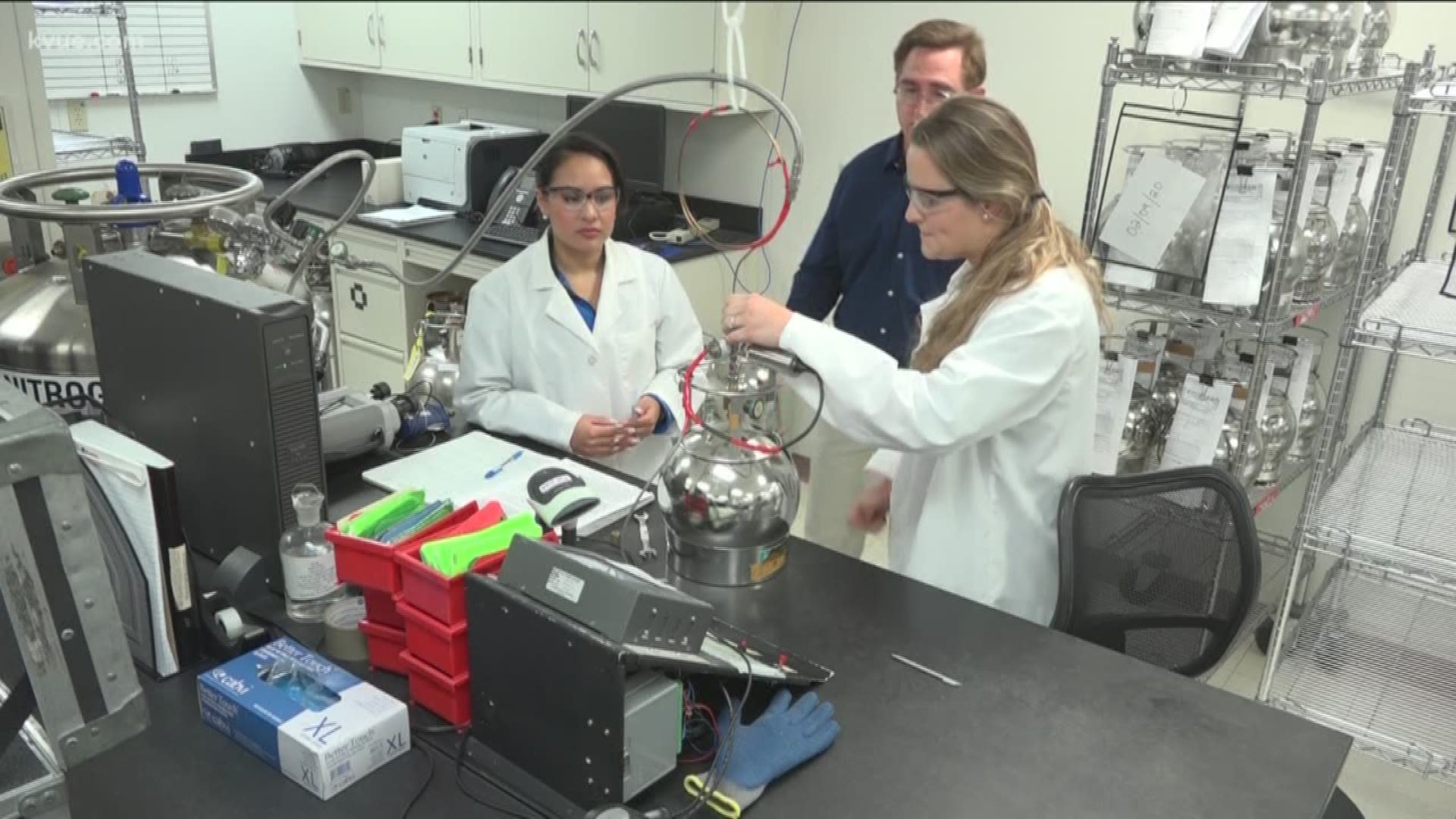AUSTIN, Texas — Clean air is vital for our environment and for public health.
Officials with the Texas Commission on Environmental Quality (TCEQ) maintain one of the most extensive air monitoring networks in the nation.
The data collected by monitoring sites are used for a variety of purposes. KVUE's Anavid Reyes got a chance to see how it's done.
Air samples are collected in a "passivated stainless steel canister," which is a vessel that can hold up to six liters of sample volume.
Samples are analyzed by the TCEQ Air Quality Laboratory for 84 compounds. This is a routine type of investigation, getting a snapshot of air quality at a particular point in time. Samples could take up to two weeks to get results.
If you want a real-time reading, you can use a multi ray.
"It pulls air through the sensor at the top, and then it goes across an ultraviolet bulb. That bulb ionizes the compounds or gasses that pass through it and that's how you get your results," an investigator said.
It tests for ground-level ozone, nitrogen dioxide, carbon monoxide and lead, among other things.
The reading is sent directly to a laptop where results are almost instantaneous.
This tool can be used in an emergency-type situation.
Another air-monitoring equipment includes the use of optical gas imaging.
After a scan, an air sample could be taken from the site via the canister and be sent off to the lab.
But what happens in the lab?
"Our job is to analyze that sample, to provide data concerning what concentration of chemical compounds are in that sample," said TCEQ Lab Manager Ken Lancaster." Then we provide that information back to them so it can aid them in their investigation."
RELATED:
The lab does not provide information indicating any kind of action should be taken. They simply provide the numbers. It's up to investigators to decide what to do with that information.
"We provide the data to the decision-makers," Lancaster said. "We provide accurate data so they can make the best decision possible when it comes to protecting human health."
When the samples enter the lab, the first thing chemists look for is that the zip ties are intact, securing the case.
"To ensure that the sample is not tampered with," Lancaster said.
You then scan the code on the paper attached to the sample and document it in the system.
"Next step – so the sample canister comes in a vacuum – so in order to analyze it, we gotta get to what we call 'positive pressure,'" he said. "So we do that by adding nitrogen."
Chemists now have to let the canister "age." There's a holding time. Once you pressurize it you have to let it sit for at least 12 hours to let everything mix and sit well.
Once they're ready for analysis, they're screwed onto the canister tree.
Then they run a pressure test to make sure the canister was tightly secured and ready for the elements to be pulled into the equipment and analyzed.
"The last thing is to clean the canister so we can ship it back out," Lancaster said.
It's placed in an "oven," where humidified nitrogen is also used for cleaning purposes.
All of this meticulous work is done to help protect human health and Texas' environment.
PEOPLE ARE ALSO READING:

